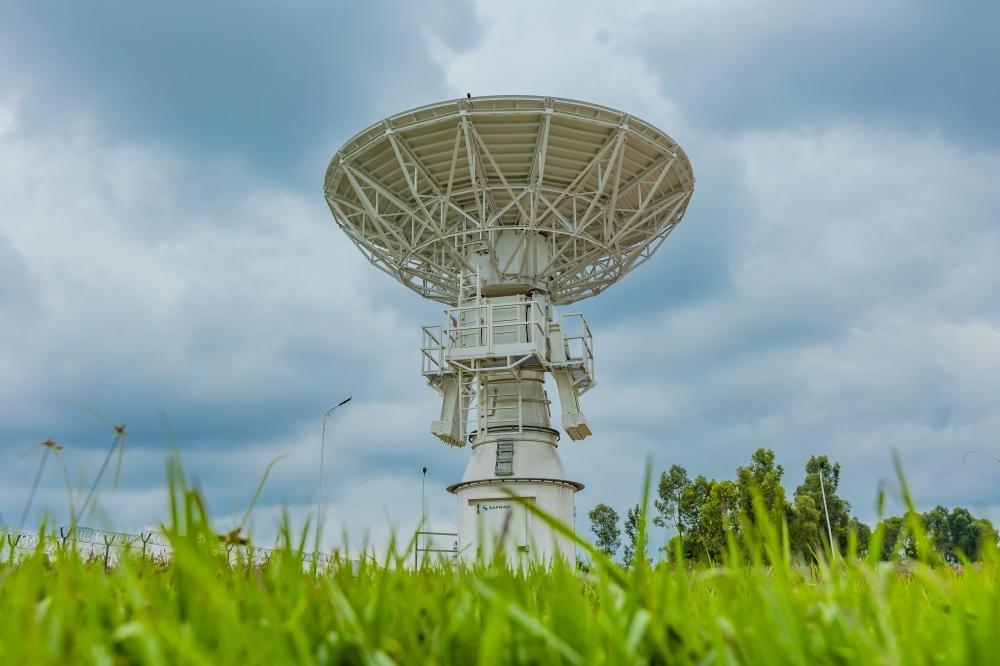Africa-Press – Rwanda. The government is accelerating efforts to establish a regional satellite assembly, integration, and testing (AIT) hub, as part of the country’s efforts to strengthen its sovereign capabilities in space technology, particularly in satellite communications and Earth observation.
The development is contained in the country’s recently approved space policy which, among others, aims to reduce Rwanda’s reliance on foreign providers for satellite imagery and communications, allowing for more secure and timely access to critical data.
Ordinarily, a satellite AIT hub is a specialised facility where satellites are assembled, tested, and prepared for launch.
This includes integrating various components—such as power systems, sensors, and communication devices—into a working satellite.
The testing phase ensures that each satellite can survive the harsh conditions of space, including extreme temperatures, radiation, and the mechanical “stress” of launch.
The New Times understands that the project, in partnership with Czech-based aerospace firm TRL Space, is expected to be operational by 2028, paving the way toward self-reliance in the development and deployment of satellites in the country, and the region.
Under the deal, TRL Space, which has since opened an office in Kigali, has pledged to invest at least $2 million into the initiative.
“Our intention is not just to supply these technologies to the country. We bring added value to the region. We want to introduce new space technologies that will increase the economic and living standards of the entire region,” TRL Space CEO Petr Kapoun said in an earlier interview.
According to him, the initial satellite built at the facility will be a collaborative effort between European and African engineers, but subsequent satellites will increasingly be constructed by local experts.
Eventually, Kapoun explained, the goal is to build an entire constellation of satellites in Africa—interconnected satellites working together to provide comprehensive and frequent imaging of the continent.
“This can be a game-changer for sectors like agriculture, climate monitoring, disaster response, and urban planning,” he added.
TRL Space, through its sister company TRL Space Rwanda, will also bring on board its expertise, development, and production capabilities to Rwanda in partnership with the government, universities, and research organizations.
“Rwanda is a country with great potential for our companies. Thanks to progressive legislation and very low bureaucracy in establishing and managing projects, it offers itself as a place where innovative solutions for the whole of Africa can be tested,” Nicol Adamcová, the Ambassador of the Czech Republic to Rwanda added.
Reacting to the available local expertise, TRL Space said that it had already initiated identifying and nurturing local talent through the recently organised CubeSat Makerthon, which enabled the company to recruit a diverse pool of skilled individuals across Africa.
The global space economy, currently valued at $630 billion as of 2023, is projected to nearly triple to $1.8 trillion by 2035, according to industry data.
However, Africa’s share remains modest at just $22.6 billion.
According to the Rwanda Space Agency (RSA), Rwanda’s foray into satellite manufacturing could be a critical step in closing that gap and positioning the country as a leader in Africa’s emerging space industry.
“By hosting the AIT hub, Rwanda stands to benefit from high-skilled job creation, knowledge transfer, and the growth of supporting industries such as electronics, precision engineering, and data analytics,” RSA said.
The agency added that the hub could also attract talent from the region ranging from engineers, researchers, and students from across the continent to gain hands-on experience in space systems engineering.
Officials argued that while $2 million may be a relatively small figure compared to global aerospace investments, it marks a strategic starting point for Rwanda.
The country’s space journey began even before the formal establishment of the RSA.
In November 2019, Rwanda launched its first satellite, RwaSat-1, which provides valuable data to the Ministry of Agriculture for use in soil moisture analysis, land use surveys, and crop yield estimates
The space agency says it has also invested in disaster response systems.
In May 2021, when Nyiragongo Volcano erupted the agency used space technology to monitor the volcano’s activity and lava movement.
Through these monitoring efforts, decision-makers avoided evacuating the entire town of Rubavu.
Just recently, during heavy rains in May 2023 that claimed more than 130 lives in the country’s Western region, the RSA said it provided support using satellite imagery, machine learning, and real-time monitoring to assess damages, identify safe evacuation locations, and coordinate relief efforts.
For More News And Analysis About Rwanda Follow Africa-Press






